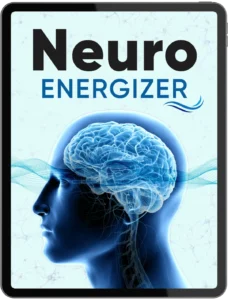Procrastination is one of the most common obstacles that silently steals time, energy, and potential. Many people know exactly what they need to do, yet they find themselves postponing tasks until pressure becomes unbearable. Understanding the deeper reasons behind procrastination and applying effective strategies can transform productivity and personal growth. This article explores powerful ways of overcoming procrastination and how these methods can reshape your daily habits, mindset, and long-term success.
One of the most practical ways of overcoming procrastination is learning how to identify the emotions that trigger avoidance. Procrastination is rarely about laziness; it often stems from fear of failure, perfectionism, overwhelm, or a lack of clarity. When you recognize these emotional barriers, you can choose healthier responses instead of delaying tasks. Emotional awareness builds resilience and gives you the control needed to move forward.
Another impactful method is breaking tasks into smaller, more manageable steps. Large goals or complex tasks often feel intimidating, which leads to delaying them. When you divide a goal into tiny actions, the task appears easier and more achievable. This reduces mental resistance and encourages consistent progress. Even a five-minute action can shift your momentum and help you build productivity habits that last.
Creating a supportive environment is also one of the essential ways of overcoming procrastination. Your surroundings influence your behavior more than you might realize. A cluttered space makes it harder to concentrate, while a well-organized environment increases focus and motivation. Minimizing distractions such as digital notifications, noise, or multitasking can significantly improve your ability to stay on track. A clean, intentional environment helps your mind feel clear and ready for action.
Another strategy is adopting time-blocking techniques. Time-blocking allows you to assign specific time periods for particular tasks, reducing the likelihood of drifting into unproductive activities. This method helps you maintain structure and establishes a routine that supports discipline. When your day is divided into purposeful blocks, you create a sense of commitment and accountability.
Understanding your personal energy cycle is one of the lesser-known ways of overcoming procrastination. Every person has different periods of the day when their energy and mental clarity peak. By scheduling your most important tasks during these high-energy times, you increase your efficiency and reduce the urge to delay. When you align work with your natural rhythm, productivity becomes easier and more enjoyable.
Rewarding yourself for completing tasks is another effective approach. The brain responds strongly to rewards, and positive reinforcement helps build lasting productivity habits. Whether it is a short break, a treat, or a relaxing activity, rewards create motivation and make progress more satisfying. This method transforms productivity into an encouraging experience rather than a stressful one.
Self-compassion also plays a crucial role. Many people procrastinate because they criticize themselves or fear making mistakes. Being overly harsh on yourself creates anxiety, which leads to more avoidance. Practicing kindness toward yourself reduces pressure and helps you approach tasks with clarity and confidence. Accepting imperfection is one of the most sustainable ways of overcoming procrastination because it promotes progress over perfection.
Developing a strong sense of purpose significantly reduces procrastination. When you connect tasks to your personal goals and values, they become meaningful rather than burdensome. Purpose fuels motivation and turns routine activities into steps toward a bigger vision. Reflecting on why a task matters can transform your entire approach to productivity.
Another valuable technique is using the two-minute rule. This method suggests that if a task takes less than two minutes, you should do it immediately. It prevents small responsibilities from piling up and reduces mental clutter. Completing quick tasks quickly creates momentum and prevents procrastination from gaining control.
Building accountability is also one of the powerful ways of overcoming procrastination. Sharing your goals with a friend, mentor, or colleague creates external motivation. When someone else is aware of your commitments, you naturally feel more responsible for following through. Accountability partners can also encourage you, track progress, and celebrate achievements with you.
Finally, continuous learning is essential for long-term success. The more you understand your habits, the easier it becomes to change them. Reading books, listening to podcasts, and learning productivity techniques helps you build tools that support a disciplined lifestyle. Growth-oriented learning keeps you inspired and encourages consistent improvement.
By applying these various ways of overcoming procrastination, you can develop stronger habits, increase focus, and achieve greater success in both personal and professional areas. Procrastination does not have to control your life; with the right strategies, you can transform the way you work and create a more fulfilling future.




